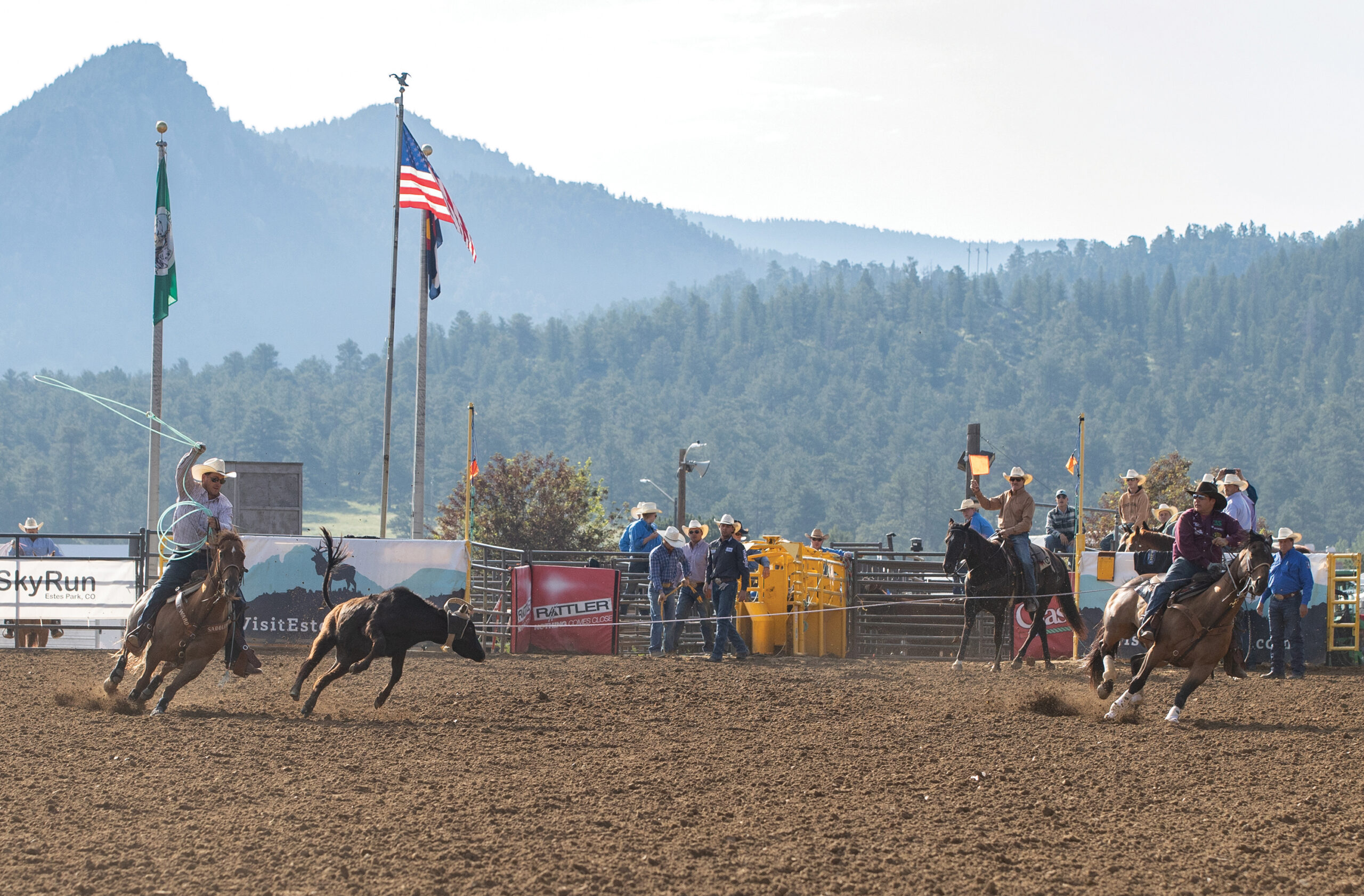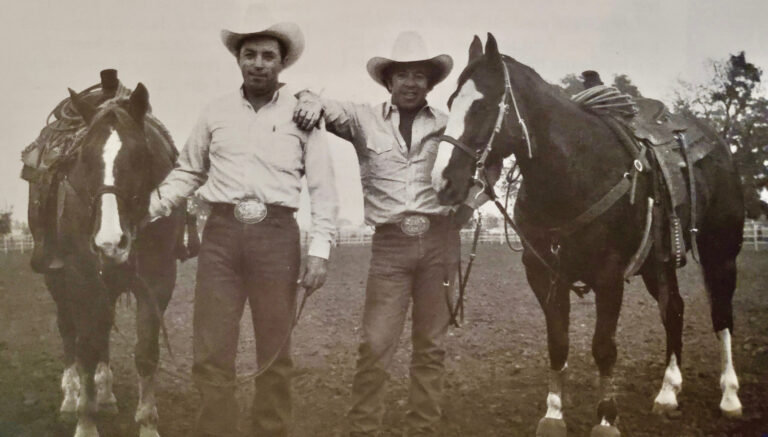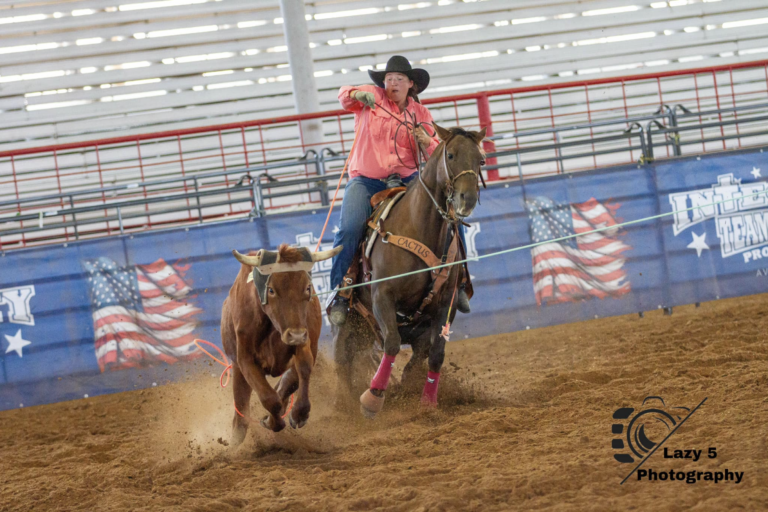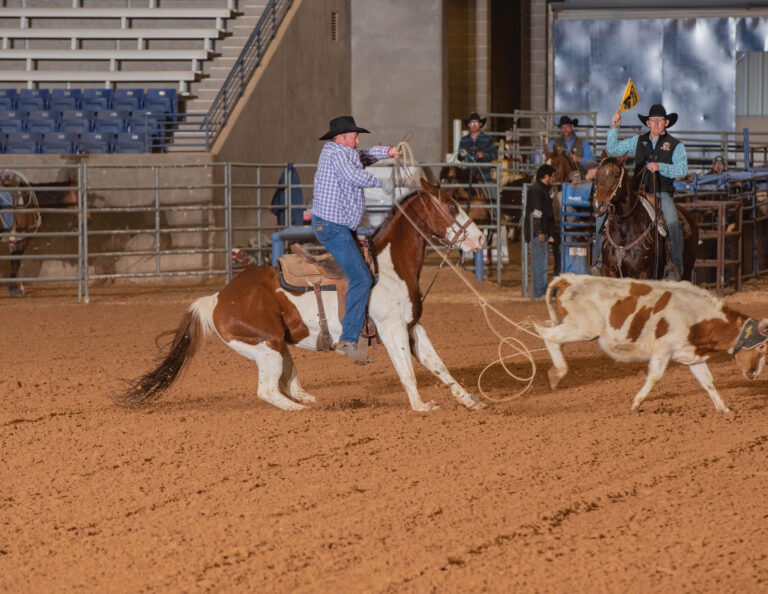Situation:
Round 2, Rooftop Rodeo
Estes Park, Colorado
Time:
4.2-second run
Payout:
$1,573 a man for the go-round win and $2,359 a man for the average win


a) Steer: It was a pretty soft set of steers, and our first one ran really hard. But we had an idea that this was an exactly middle-of-the-road steer. We weren’t expecting to do as well as we did, but that’s the way the rodeo unfolded. Several guys drew on the other side of the herd and that let us stay in there.
b) Handle: I think the amount of rope a header throws being directly correlated to the handle is a general misconception with regard to more rope equals a worse handle. It’s very subjective. A percentage of that rope is what Andrew reached with, and there’s a percentage of the rope that Andrew takes to dally. He throws two coils and dallies on the third. Everything to do with the handles has to do with the angles and trajectory his horse is on. The handle was perfect on that steer. From the beginning of the run until we got the flag, I rode really aggressive. I got a good start on the steer and stepped him a step left. I don’t drop my percentages any unless I get out of tune with my partner. The run we make the most times throughout the year is our most aggressive run. I’ve probably run 50 to 70 steers in a row at this point roping aggressively versus trying to catch.
[READ MORE: Jeremy Buhler Talks RodeoHouston Winning Run]
c) Position: I’m not a surfer, but I think about position like a wave. There’s a sweet spot there. Within it, what I’m aiming for is a position that, as soon as the steer is deemed legal, I can throw. The funny thing about the crossfire is the judgment is always questioned afterward. But I believe I decide when the steer is legal. I’m the one who decides when I throw—not the flagger. He just decides whether it was past said point. I’m trying to ride to a position I can throw as soon as I deem the steer legal. I’m not trying to lower my chances of following the next cow well. But I’d rather be in a bad position for a fast shot than a good position for a slow shot. I’m going to take a better chance of going past the turn than I am getting trapped inside. I would rather be aggressive if I have to than safety up.
d) Left Hand: Probably where I differ from most trainers and professional heelers is that I don’t ride my horse’s head as much. I explain it like this: The head is a primary balancing mechanism for the horse. Particularly when you look at the shape of a horse, the tail is a foot long and weighs 2 lbs., and his neck is 4-foot-long and weighs 200 to 400 pounds. A cheetah’s tail is longer and heavier than a horse’s, and his neck is much shorter and smaller. The cheetah uses his tail for balance, where a horse uses his head. So my reasoning for having my hand in the middle is that I’m trying to get my footwork right off of my feet. I want my horse’s feet to be an extension of my feet. I have a few cues I make with the bridle reins. My horses are broke enough I can create shape if needed. I just almost never do. I don’t see the value in trying to control the shoulder off the cheek. I understand some but not all of what other guys do. For me, I’m trying to let his legs be an extension of mine and I want him to have some freedom to use his head. I want him to have the option of putting his head to the outside for balance and his shoulders down.
[READ MORE: Dustin Bird Breaks Down His Record-Breaking Run at the Montana Circuit Finals]
e) Legs: I think that comes back to where the energy initiates. For me, it’s the abdomen, the thighs, the quads, the calves and then finally in my feet. In my understanding of riding, my horse is going to be most sensitive to my feet and my spurs, but I almost never have to use them with my thighs to my knees to my calves. At the point I was launching off the box, I used my feet and a little bit of spur. At the point of this picture, though, I might have squeezed again as we’re rating the steer. That might have given me the step left. If they get squeezed, they accelerate past the spot, and I’ll sacrifice anything to do with my horse or position for the sake of getting out the barrier, getting him caught and getting him turned. I’m coming back to the hips in this stride. My horse’s nose was 4-foot past the hips, and I’ve taken my calves off the horse and gotten hollow and heavy in the saddle. My horse’s feet will go in the ground in response, too. All four of my horse’s feet will go into the ground. It’s more of a hover because, now, Andrew has control of the hips. I’m hovering, and I’ve let my horse hit the engine brake. That steer is still trying to get away from us because we’re both behind him again. That’s about 50% my horse turning the corner and 50% Andrew swinging the steer down the arena. TRJ












